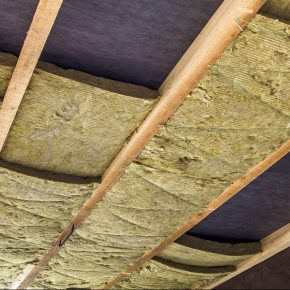
How can insulation help reduce the carbon footprint of a building?
Reducing the carbon footprint of buildings has become an essential goal in a collective fight against climate change. Buildings, both residential and commercial, contribute significantly to global carbon emissions, primarily through energy consumption. One of the most effective ways to tackle this issue is through proper insulation. By improving a building’s insulation, we can significantly reduce energy use, leading to lower carbon emissions and a more sustainable environment.
What Is a Carbon Footprint?
Definition and Significance
A carbon footprint refers to the total amount of greenhouse gasses, primarily carbon dioxide (CO2), that are emitted into the atmosphere as a result of human activities. In the context of buildings, these emissions typically come from the energy used for heating, cooling, lighting, and operating appliances.
Sources of Carbon Emissions in Buildings
The primary sources of carbon emissions in buildings include:
– Heating and Cooling: The largest share of energy consumption in buildings goes to maintaining a comfortable indoor temperature.
– Electricity Usage: Lighting, appliances, and electronics all require electricity, much of which is still generated from fossil fuels.
– Construction Materials: The production and transportation of building materials also contribute to the carbon footprint.

The Importance of Reducing Carbon Footprints
Environmental Impacts
Reducing the carbon footprint of buildings is crucial for mitigating climate change. Lower emissions mean less CO2 in the atmosphere, which helps reduce global warming and its associated impacts, such as extreme weather events and rising sea levels.
Economic Benefits
Energy-efficient buildings not only help the environment but also offer significant economic benefits. Lower energy consumption translates to reduced utility bills, while energy-efficient properties often have higher market values and lower maintenance costs.
Social Responsibility
As the world becomes more aware of environmental issues, reducing the carbon footprint of buildings is also a matter of social responsibility. Companies and individuals alike are increasingly expected to adopt sustainable practices to protect the planet for future generations.
Understanding Building Insulation
What Is Insulation?
Insulation is a material or combination of materials that prevent or reduce the transfer of heat between the inside and outside of a building. It works by slowing down the movement of heat, keeping warm air inside during the winter and outside during the summer. There are many types of insulation such as loft insulation or wall insulation. Companies such as Trade Insulations supply insulation to the UK.
How Insulation Works
Insulation works by trapping air within its structure, reducing the rate at which heat is lost or gained through walls, roofs, and floors. The effectiveness of insulation is measured by its R-value, which indicates its resistance to heat flow. The higher the R-value, the better the insulation.
The Relationship Between Insulation and Energy Efficiency
How Insulation Reduces Energy Consumption
Proper insulation reduces the amount of energy needed to heat and cool a building by minimising heat loss in winter and heat gain in summer. This reduction in energy demand directly translates into lower carbon emissions, as less energy is required from fossil fuel-based sources.
Insulation’s Impact on Heating and Cooling Systems
With better insulation, heating and cooling systems do not have to work as hard to maintain a comfortable indoor temperature. This not only reduces energy consumption but also extends the lifespan of these systems, leading to further cost savings.
Case Studies on Energy Savings from Insulation
Numerous case studies have shown significant energy savings from proper insulation. For example, a well-insulated home can reduce energy consumption by up to 30%, leading to substantial reductions in both energy costs and carbon emissions.
How Insulation Helps Reduce Carbon Emissions
Lowering Energy Demand
By reducing the amount of energy required to heat and cool a building, insulation directly lowers the demand for electricity and fossil fuels. This decrease in energy use leads to fewer carbon emissions being released into the atmosphere.
Reducing the Need for Fossil Fuels
When buildings consume less energy, there is less need to burn fossil fuels for power generation. This reduction in fossil fuel use is critical for decreasing the overall carbon footprint of a building.
Contribution to Green Building Certifications
Proper insulation is a key component of green building standards, such as LEED (Leadership in Energy and Environmental Design). These certifications recognise buildings that are designed to minimise environmental impact, including reducing carbon emissions.
Comparing the Carbon Footprint of Different Insulation Materials
When choosing insulation, it’s essential to consider the entire lifecycle of the material, from production to disposal. While some materials may have a higher initial carbon footprint, their long-term energy savings can make them more environmentally friendly overall.
The Future of Insulation in Sustainable Building Practices
As the demand for green buildings grows, so too will the development of innovative insulation solutions. Future insulation materials may focus on reducing environmental impact while enhancing energy efficiency even further.
Insulation and Building Codes
The Role of Building Codes in Promoting Insulation
Building codes in the UK play a crucial role in ensuring that new buildings are energy-efficient. Over the years, these codes have become more stringent, requiring higher levels of insulation to meet energy performance standards.
How Codes Have Evolved to Support Energy Efficiency
In response to the growing need for sustainability, building codes have evolved to mandate better insulation. This evolution has been instrumental in driving down the carbon footprint of new constructions.
Compliance and Its Impact on Carbon Reduction
Compliance with modern building codes ensures that buildings are constructed to minimise energy consumption. This compliance is a critical step in reducing the overall carbon emissions of the building sector.
Cost-Effectiveness of Insulation
Initial Investment vs. Long-Term Savings
While the initial cost of insulation can be significant, the long-term savings on energy bills often justify the expense. Additionally, insulated buildings tend to have higher resale values, making insulation a wise investment.
Financial Incentives for Insulating Buildings
Many governments and organisations offer financial incentives, such as tax credits and rebates, for insulating buildings. These incentives can significantly reduce the upfront cost of insulation projects.
Challenges and Misconceptions About Insulation
Common Barriers to Insulation Adoption
Despite its benefits, several barriers prevent widespread adoption of insulation. These include the upfront cost, lack of awareness, and the misconception that insulation is only necessary in cold climates.
Misconceptions About Insulation and Energy Savings
One common misconception is that insulation is only effective for winter heating. In reality, insulation is equally important for keeping buildings cool in the summer, making it a year-round solution for energy efficiency.
How to Overcome These Challenges
To overcome these barriers, it’s important to educate homeowners and builders about the benefits of insulation. Financial incentives and demonstration projects can also help increase adoption rates.
Practical Steps to Insulate Your Building
Assessing Your Insulation Needs
Before installing insulation, it’s important to assess your building’s current insulation levels. This can be done through a professional energy audit or by inspecting areas like the loft and walls for signs of inadequate insulation.
Choosing the Right Insulation Material
Selecting the right insulation material depends on several factors, including your climate, budget, and environmental preferences. It’s important to consider both the R-value and the carbon footprint of the insulation.
DIY vs. Professional Installation
While some insulation projects can be done by DIY enthusiasts, others require professional installation. Hiring a professional ensures that the insulation is installed correctly and performs as expected.
Using insulation to fight against climate change
Insulation is a powerful tool in the fight against climate change, offering a practical and cost-effective way to reduce the carbon footprint of buildings. By improving energy efficiency, insulation not only lowers greenhouse gas emissions but also provides economic and social benefits. As we move towards a more sustainable future, the role of insulation in creating green, energy-efficient buildings will continue to grow in importance.
Latest news

28th February 2025
Passivent ventilation solutions are top of the class
Passivent has supplied a combination of Hybrid Plus2 Aircool ventilators and Hybrid Plus Airstract roof ventilation terminals for a new London primary school.
Posted in Air Conditioning, Articles, Building Industry News, Building Products & Structures, Building Services, Case Studies, Ceilings, Facility Management & Building Services, Heating, Ventilation and Air Conditioning - HVAC, Restoration & Refurbishment, Retrofit & Renovation, Roofs, Sustainability & Energy Efficiency, Ventilation, Walls
28th February 2025
Troldtekt: New acoustic liner ensures good acoustics and easy handling
Both a building’s users and its developers have a good reason to get excited about the new Troldtekt Plus 25 panels. This specially developed acoustic panel sets a high standard for both sound absorption and building efficiency.
Posted in Acoustics, Noise & Vibration Control, Articles, Building Industry News, Building Products & Structures, Building Services, Building Systems, Ceilings, Facility Management & Building Services, Floors, Innovations & New Products, Insulation, Interior Design & Construction, Interiors, Restoration & Refurbishment, Retrofit & Renovation, Timber Buildings and Timber Products, Walls
28th February 2025
InstallerSHOW 2025 – Registration is now OPEN!
Building on the success of last year, InstallerSHOW is returning to the NEC from the 24th to the 26th of June…
Posted in Articles, Building Industry Events, Building Industry News, Building Products & Structures, Building Services, Exhibitions and Conferences, Health & Safety, Retrofit & Renovation, Seminars, Sustainability & Energy Efficiency
28th February 2025
ABLOY securing Helsinki’s heritage and Croatia’s waste management
ABLOY, part of ASSA ABLOY Group, has redefined its brand, focusing on the value it brings to customers around the world…
Posted in Access Control & Door Entry Systems, Architectural Ironmongery, Articles, Building Industry News, Building Products & Structures, Building Services, Case Studies, Doors, Facility Management & Building Services, Health & Safety, Retrofit & Renovation, Security and Fire Protection
 Sign up:
Sign up: